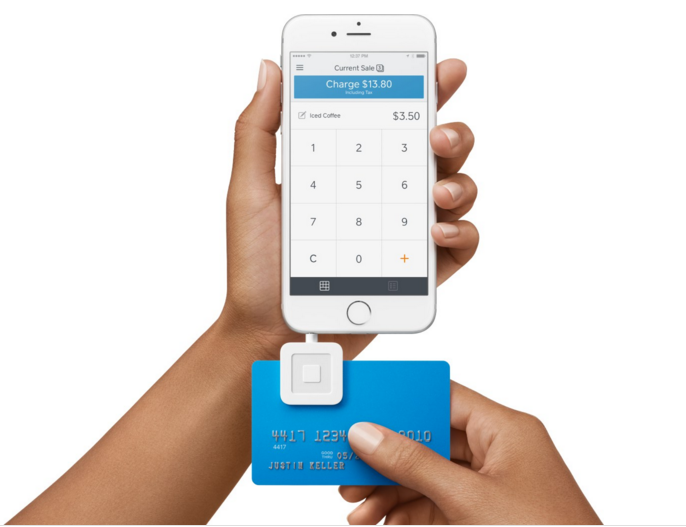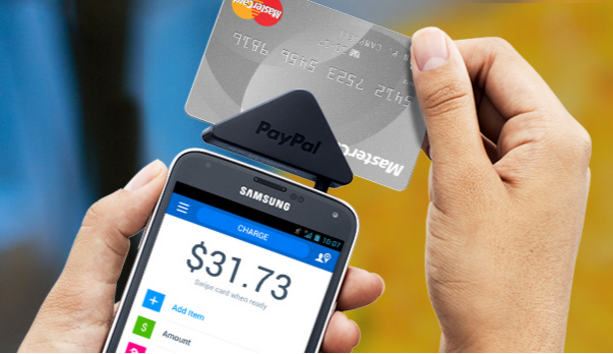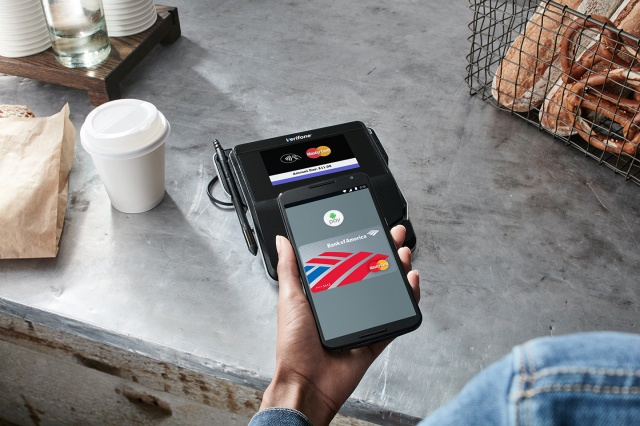Assess your business, determine your goals and objectives, understand your customers, decide on the best mobile payments solution for their needs, then educate your customers and employees

As a retailer, you want to be able to provide your customers with not only great products, but a great overall buying experience as well.
One of the ways to do that is to make paying for your products or services as easy as possible.
And one of the ways to make paying easy is with mobile payments.
Mobile payments, as they apply to retail, can be defined in two primary ways:
- Accepting payments away from a normal cash register, such as on the show floor or from a food truck on the side of the road.
- Allowing customers to pay for goods and services with their smartphone, instead of with cash or credit card.
Statista predicts that the global mobile payment market will surpass $1 trillion by 2019, with retail playing a big role in that growth.

By providing easier ways for your customers to pay you for products and services, you can increase revenue, improve customer satisfaction, and learn more about your customers’ spending habits.
But jumping into mobile payments can be scary if you don’t know exactly what you’re getting into. First, you have to determine that mobile payments is right for your business. Then you may have to purchase and install technologies that you’re not familiar with and integrate these solutions into your point-of-sale (POS) system, which at times can be a big endeavor.
Here are some things to think about before you implement a mobile payment solution for your business.
1) Perform an assessment of your business
The first thing you should do is perform an analysis of your business to see how a mobile payment solution may fit in. You should ask yourself these questions:
- What are my company’s strengths and weaknesses, and how will mobile payments address these?
- What opportunities will mobile payments provide to my company?
- Where do I sell my products or services? Am I mobile-only, or brick-and-mortar only, or a combination of both?
This will give you a better idea of the impact that a mobile payment solution may have on your company.
2) Determine your goals and objectives
Once you analyze your business, you can then determine the goals and objectives that mobile payments will help you achieve. These can include:
- Growth of revenue
- Improvements in customer satisfaction
- Increase of knowledge about your customers
- Other goals and objectives
Outlining your goals and objectives will give you an understanding of how mobile payments can improve your business and what you need to do to get there.
3) Understand your customers and business
The next step is to garner a deep understanding of your customers and their behaviors. Some user-centric questions to ask include:
- What are the demographics and psychographics of my customers? Are they young, old, tech savvy, affluent? Or do they possess other characteristics?
- How do they typically pay for your goods or services? Cash, check, credit card, debit card, or other?
- What kind of technology do they use? iPhones, Androids, feature phones, or other?
Understanding your customer, in addition to your business analysis, will help determine if implementing a mobile payment solution is right for your business.
If it is, then these considerations will help you decide which solution is the best fit.
4) Determine the best mobile payment solution(s)
Once you have determined that a mobile payment system is necessary to implement, you will then have to decide which solution is best for your business.
There are many different technologies and solutions to assess when implementing a mobile payments solution for your customers. Here is an overview of the options to consider.
i) Mobile credit card processors
Mobile credit card processors have had a huge impact on small and local businesses, such as food trucks and vendors at fairs and shows, and have increased these companies’ ability to accept credit cards when they are on the go.
With mobile credit card processors, you can accept credit and debit card payments by using a small card reader that is plugged into your smartphone’s headphone jack. The credit or debit card information is then recognized by the card reader’s companion mobile application to process the payment.
Many of the mobile credit card processing companies provide the card reader for free. Some don’t charge a monthly fee for their service, but all of them take a percentage of each transaction, usually on the scale of 2-3%, that is processed by their system.
Most if not all have accompanying financial software to help business owners keep track of revenue, customer information, and other accounting aspects.
Many of these mobile credit card processing companies are now upgrading their systems to accepts mobile wallet payments, which we will discuss later in this article.
Let’s take a look at some of the big players in this space.
The major players in mobile credit card processing
Square
Square basically invented this industry, launching its well-recognized, white square credit card reader in 2009. The company provides a very advanced yet easy-to-use payment processing system for no monthly fee and no charge for the credit card reader. Square charges a flat fee of 2.75% of every transaction.

In addition to their card reader, they have launched other products such as the Square Stand, which essentially replaces cash registers, and a contactless + chip reader, which facilitates payment with near-field communications payment systems (discussed later in this article) and credit cards with EMV (Europay, Mastercard, Visa) chips.
After Square launched, many large banks and financial institutions followed suit with their own mobile credit card processors.
Chase Paymentech / Chase Mobile Checkout
Chase Mobile Checkout is JPMorgan Chase’s answer to Square. While the Paymentech brand has been around since 1997, its mobile card reader was only launched in 2013.
Paymentech has the backing of one of the largest banks in the world, so you can feel comfortable that the company will be around for a long, long time. Additionally, Chase Paymentech has many other payment offerings that you may need as your company grows.
Like Square, they provide a card reader to new customers for free. Chase Paymentech charges a fee of 1.65% + $0.25 per transaction.
Intuit’s Quickbooks GoPayment
GoPayment is the mobile credit card reader from Intuit, maker of popular financial software such as Quickbooks, TurboTax, Mint, and Quicken.
GoPayment offers multiple pricing plans to its customers. You can select a no monthly fee plan but pay higher per transaction fees (2.4% + $0.25) or you can pay $19.95 per month and pay a lower rate (1.6% + $0.25).
The biggest differentiator of GoPayment is the seamless integration with Quickbooks, the small business accounting software used by millions of businesses. All GoPayment transactions sync with Quickbooks to allow small business owners to easily manage their finances.
PayPal Here
Launched in 1999, PayPal was one of the first online money transfer services. In 2012, they entered the mobile credit card processing realm with PayPal Here.

Similar to Square, PayPal Here only charges a flat fee per transaction (2.7%) and no monthly fee.
PayPal’s updated mobile apps allow customers to search for local vendors, order ahead at participating locations, and access their PayPal credit accounts.
PayPal Here also allows businesses to invoice customers for later payment.
Capital One Spark Pay
Capital One is another big bank and credit card company that jumped into the mobile credit card processing industry with Spark Pay.
Similar to Intuit GoPayment, Spark Pay offers two plan options. You can choose to pay no monthly fee but a higher rate of 2.65% + $0.05 per transaction, or pay a $19 monthly fee for a lower transaction fee of 1.99% + $0.05.
Capital One also offers other small business services, such as a digital register, online store, and more, which may be convenient as your business grows.
For more in-depth reviews of these mobile credit card processors and others, check out Merchant Maverick.
If your business sells products at multiple places, such as in a brick-and-mortar store plus farmer’s markets and fairs, or if you run a food truck, a mobile credit card processor is a must.
ii) Mobile wallets
Mobile wallets allow users to pay you for goods and services using their smartphones.
Mobile wallets will play a huge role in the growth of mobile payments overall. According to Gartner, 50% of consumers in mature markets will use their smartphone or wearable for mobile payments by 2018.
In order to use a mobile wallet, your customers have to download a mobile app to their smartphones, create an account with that mobile payments provider, authenticate their phones, then enter credit card or other payment info to execute transactions.
There are a number of technologies being used to facilitate payments via mobile wallet. The selection of technology will have an impact on the equipment you will need to purchase to allow your customers to execute these mobile payments.
a) Near-field communications (NFC)
NFC allows two devices in close proximity to each other to exchange data. In the case of mobile wallets, your customer would wave or tap their NFC-enabled smartphone or wearable over an NFC-enabled payment terminal to transfer money from their account to you.
Many companies are banking (pun intended) on NFC being the future of mobile payments.
One hurdle to that future is the thought that NFC payments aren’t secure. Many consumers believe that if hackers tap into their phone, they can go on a shopping spree with their mobile wallet. Many also think that if their phone is lost or stolen, the thief can spend all of their digital cash easily.
In reality, NFC payments are just as secure, if not more secure, as using a credit or debit card.
After a customer waves their phone over the payment terminal, they have to authorize each transaction, whether it’s by using their fingerprint or entering a PIN. Then a chip called the Secure Element validates the transaction and sends the authorization to the payment terminal. Only then is the payment transferred and transaction completed.
CNET has an excellent overview of how NFC works and some of the ways it can be used for mobile payments and other applications.
NFC is being leveraged by some of the largest technology companies to facilitate mobile payments.
Let’s see who these companies are.
The major players in NFC mobile wallets
Apple Pay
Apple made a big splash when launching Apple Pay in September of 2014.

With Apple Pay, you can use your iPhone 6, 6s, 6 Plus, 6s Plus, or Apple Watch to make payments using NFC.
To secure transactions, Apple uses a method called tokenization, which transfers payment information over the air via complex codes, rather than actual credit card information. Additionally, users must verify their identity at the time of the transaction with their fingerprint using TouchID if they use their iPhone.
Apple has partnered with all of the major credit card companies in the U.S. (Visa, Mastercard, American Express, and Discover) as well as many major banks to facilitate payments. Apple Pay is now accepted at more than 2 million locations in the U.S., and it can be integrated into iOS apps to facilitate in-app payments as well.
Here’s a great summary of Apple Pay on MacRumors.
Android Pay
Android Pay is essentially the same as Apple Pay in that it uses NFC to deliver payments, has partnerships with the major credit card providers and banks, and can be integrated into apps to facilitate in-app payments.
The only real difference is that Android Pay is available on all Android 4.4+ phones with NFC, and is available in fewer retail locations (about 1 million) in the U.S.
Samsung Pay
Samsung Pay is available only on select high-end Samsung Galaxy phones.
The big characteristic that differentiates Samsung Pay from Apple Pay and Android Pay is that, in addition to NFC, it can also execute payments using magnetic secure transmission (MST) technology.
MST makes it possible to execute Samsung Pay payments at non-NFC terminals, and thus it can be accepted at many more locations. There are still many retail locations that don’t have NFC terminals, but over 90% of stores have magnetic card terminals that accept Samsung Pay.
Unfortunately, Samsung Pay cannot be integrated with apps.
For a great comparison between Apple Pay, Android Pay, and Samsung Pay, check out this article on Phonearena.com.
b) QR Codes
QR codes, or “quick response” codes, are two-dimensional square bar codes that were designed to replace traditional (one-dimensional) bar codes like those on product packaging.
QR codes can contain much more information than traditional bar codes and thus are leveraged for mobile payments and other more data-intensive uses such as warehouse inventory tracking.
The knock on QR codes is that they aren’t as intuitive to use as other methods of mobile payments.
In order to use a QR code for mobile payments, you have to 1) unlock your phone, 2) open an app, then 3) either use the merchant’s scanner to scan the QR code in that app or use your phone to take a picture of a QR code generated on the merchant’s point-of-sale (POS) terminal to transfer money.
On the other hand, to execute a mobile payment using NFC, all you have to do is tap your phone to a payment terminal.
The pro of using QR codes for mobile payments is that they are platform agnostic and can be used with almost any smartphone – iPhones, Androids, Windows Phone, and even Blackberry, for the most part.
That’s why some of the largest retailers have chosen to use QR codes instead of NFC for their mobile payments applications.
Let’s take a look at who is using QR codes for mobile payments.
Companies using QR codes for mobile payments
Starbucks
The ubiquitous coffee chain is one of the best case studies of successful mobile payments implementation, and they use QR codes to facilitate payments.
Starbucks launched its mobile efforts about three years ago and now 16 million customers use the app and 21% of all of its transactions come from mobile.
The company does a great job combining mobile payments and loyalty into one app. And they recently added order-ahead and delivery features to make it even easier for its customers to use the app again and again to buy that cup of joe.
Walmart
Walmart Pay launched in December 2015 and is integrated into Walmart’s mobile app so its customers can pay with any major credit card, debit card, or Walmart gift card.
When customers check out, they can use the Walmart app to scan a QR code that is generated on the POS terminal to transfer money.

Walmart made a strategic decision to use QR codes to facilitate mobile payments because of the reach that they can achieve, since QR codes are available for use on any smartphone platform.
There are 22 million users of Walmart’s app, so reach is obviously important to the big-box store.
Walmart has no plans to accept any other form of mobile payments, such as Apple Pay or Android Pay.
CurrentC
CurrentC is the QR-code based mobile payments platform from the Merchant Customer Exchange (MCX), which is a consortium of huge retailers that includes Best Buy, Target, and interestingly enough, Walmart.
CurrentC has been plagued with development delays but the app is currently being beta-tested with various retailers in Columbus, OH, with a nationwide rollout continuing in 2016.
CurrentC is available for both iOS and Android and includes loyalty programs and coupons in addition to mobile payments.
LevelUp
LevelUp is a startup trying to gain ground in mobile payments by targeting the restaurant niche.
LevelUp powers mobile payments for over 14,000 businesses and primarily focuses on fast-food and fast-casual restaurants and coffee shops.
After an order is placed, the merchant’s bar code scanner scans a QR code on the customer’s LevelUp app to transfer payment.
The customer can receive rewards and loyalty points, and the merchant gains insight and analytics into their customers.
LevelUp has acquired $40 million in funding to try to compete with the big boys of mobile payments.
5) Educate your employees and customers
New technologies can disrupt how things are currently being done. Make sure that disruption is for the better by educating your customers and employees about the benefits of mobile payments.
Start with your employees. Ensure that they understand what mobile payments are, which technologies are implemented, and how these technologies work. Make sure that they can properly communicate all of this to your customers.
Then educate your customers. Place ample signage near your POS that explains which mobile payment methods they can use to pay for your goods. And engage them and explain the pros of mobile payments and how they can make their buying experience better.
Conclusion
As you can see, there are plenty of options to choose from when determining which mobile payments platform to integrate into your shopping experience.
But before you determine the solution, you need to perform a business assessment, set your goals and objectives, and thoroughly understand your customer.
Only then can you decide on the best mobile payment solution for your customer and business.
Then you have to educate both your employees and customers on the benefits of mobile payments and how best to use them.
Over to you
Have you implemented mobile payments for your business? If not, why not?
If so, what questions did you ask and what analyses did you perform before selecting a solution?
We’d love to hear your thoughts in the comments.
Like this post? Please share it using the share buttons to the left! Then join our mailing list below and follow us on Twitter – @thorntech – for future updates.
[grwebform url=”https://app.getresponse.com/view_webform_v2.js?u=BK4gP&webforms_id=2886304″ css=”on” center=”off” center_margin=”200″/]


